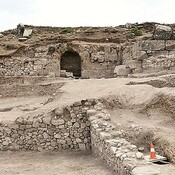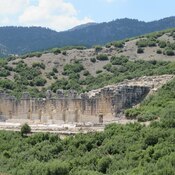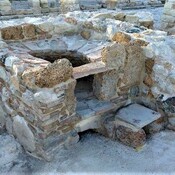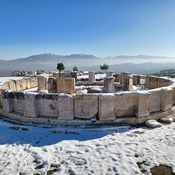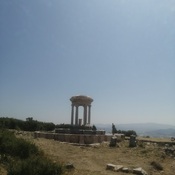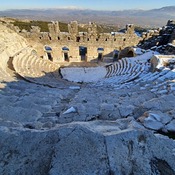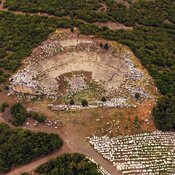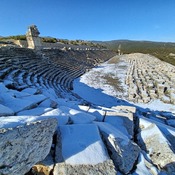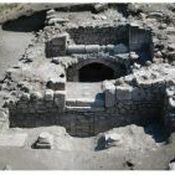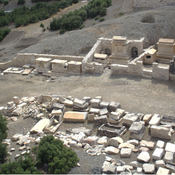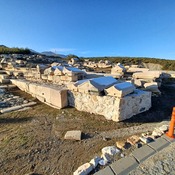According to the tradition Kibyra (Cibyra) was founded by Kibyras. It is a name belonging to the Luwian language, one of the oldest peoples of Anatolia dates from the Late Bronze Age. The political and economic power of the city, which has ruins covered an area of about 405 hectares, started in Helleniistic period and reached its heyday during the Roman Empire. According to Polybius1 and Strabo Kibyra was ruled by tyrants, and the name of the first known tyrant or tyrantgens is Moagetes. The city developed thanks to iron work and horse breeding.
Strabo:
"It is said that the Cibyratae are descendants of the Lydians who took possession of Cabalis, and later of the neighboring Pisidians, who settled there and transferred the city to another site, a site very strongly fortified and about one hundred stadia in circuit. It grew strong through its good laws; and its villages extended alongside it from Pisidia and the neighboring Milyas as far as Lycia and the Peraea of the Rhodians. Three bordering cities were added to it, Bubon, Balbura, and 0enoandon, and the union was called Tetrapolis, each of the three having one vote, but Cibyra two; for Cibyra could send forth thirty thousand footsoldiers and two thousand horse. It was always ruled by tyrants; but still they ruled it with moderation. However, the tyranny ended in the time of Moagetes, when Murena overthrew it and included Balbura and Bubon within the territory of the Lycians. But none the less the jurisdiction of Cibyra is rated among the greatest in Asia. The Cibyratae used four languages, the Pisidian, that of the Solymi, Greek, and that of the Lydians; but there is not even a trace of the language of the Lydians in Lydia. The easy embossing of iron is a peculiar thing at Cibyra".
Sources:
- George E. Bean, Lycian Turkey: An Archaeological Guide, London John Murray Publishers Ltd 1989, p. 161-164
- idem: KIBYRA MAIOR (Horzum [Gölhisar]) Phrygia, Turkey, .in: The Princeton encyclopedia of classical sites. Stillwell, Richard. MacDonald, William L. McAlister, Marian Holland. Princeton, N.J. Princeton University Press. 1976.
- Kibyra- Tay Projesi, http://www.tayproject.org/TAYages.fm$Retrieve?CagNo=5282&html=ages_detail_e.html&layout=webhttp://snible.org/coins/hn/phrygia.html
- Strabo, Geography XIII.4, ed. H. L. Jones, ; London: William Heinemann, Ltd. 1924., http://www.perseus.tufts.edu/hopper/text?doc=Perseus:text:1999.01.0198:book=13:chapter=4&highlight=cibyra
- Thomas Corsten, "Kibyra 2003", Vortrag, gehalten auf dem XXVI. Uluslararası Kazı, Araştırma ve Arkeometri Sempozyumu, Konya 2004, in: 22. Araştırma Sonuçları Toplantısı, Ankara 2005, pp. 29-34
- Şükrü Özüdoğru, Kibyra ve Yakın Çevresinin Erken Dönem Yerleşim Tarihçesi [The Early Settlement History of Kibyra and its Surroundings], in: Prof. Dr. A.Vedat Çelgin'in 68. Doğum Günü Onuruna Makaleler, Arkeoloji ve Sanat Yayınları, Istanbul 2018
- Historiai. Polybius. I.21.4, Theodorus Büttner-Wobst after L. Dindorf. Leipzig. Teubner. 1893


